How low contact resistance is achieved can be a key differentiator between zero insertion force (ZIF) and low insertion force (LIF) connectors. Many LIF connectors have a low contact resistance of about 30 mΩ when mated without needing a locking mechanism. ZIF connectors generally require a locking mechanism to achieve low contact resistance and a secure connection. But some LIF connectors (especially larger designs) also include a locking mechanism.
Initially used in applications like laptop computers, mobile devices, and flat panel displays, ZIF connectors are being used in a growing number of areas. Of course, they aren’t really “zero” insertion forces, but their minimal insertion force reduces the risk of damage to other system elements during insertion or removal.
ZIF connectors are highly durable since they eliminate the need to use significant force during connections. That means less wear on the connector, its contacts, and the system hosting the connector. Depending on the design, ZIFs are locked into place with levers, sliders, latches, hinges, and other mechanisms that can withstand multiple mating cycles and provide solid connectivity.
ZIF types & applications
ZIF connectors tend to be relatively small, low profile, and lightweight. They have a variety of pitches, contacts, and orientations suited for applications in different industries. One general class of ZIF applications are wire-to-board connectors like flexible flat cable (FFC) and flexible printed circuit (FPC) connectors, display connectors, and serial advanced technology attachment (SATA) connectors.
Because of the versatility of FFC and FPC connectors, they are often available with a choice of ZIF or LIF implementations (Figure 1). FFC and FPC connectors enable high-density connectivity in applications like:
- Automotive systems like infotainment and advanced driver assistance systems (ADAS)
- Consumer electronics including laptop computers and smartphones
- LED lighting systems
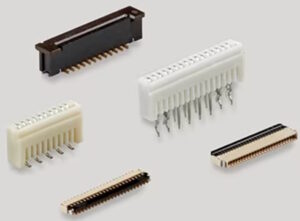
ZIF connectors can support a range of display interfaces including low voltage differential signaling (LVDS), embedded display port (eDP), mobile industry processor interface (MIPI), and others. There are many types of displays including:
- Digital signage
- LCD and OLED panels
- Monitors and televisions
- Touchscreens
The primary use of SATA connectors is linking storage devices like hard disk drives (HDDs), solid state drives (SSDs), and optical disk drives with interface electronics. The locking mechanisms in ZIF connectors support reliable high-speed data transfers in portable computers, data center and server storage systems, and network-attached storage (NAS) devices.
While ZIF connectors have many advantages, they also have limitations. For example, they are not suitable for connections that require high voltages or high currents.
LIF panel connectors
LIF connectors are available in a variety of formats. LIF panel connectors can support a range of connectivity applications including high-density I/O. They are locked into place with a half-turn twist and can include multiple signal, power, and RF contacts with 260 or more I/Os per connector (Figure 2). These LIF connectors use hyperboloid pin and socket contacts that offer improved performance compared with simple paddle spring contact designs. The RF contacts are rated for 2 GHz and the power contacts for up to 23 A.
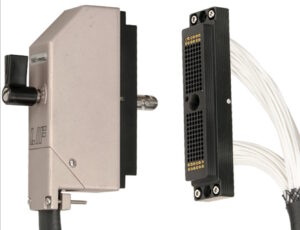
High-power LIF connectors
LIF power connectors are available for industrial, military, data centers, electric vehicle charging, and renewable energy applications. Performance examples include 6.4 mm pins rated for 100 A per contact and 9.1 mm pins rated for 180 A per contact, both at 600 V with a maximum temperature rise of 30 °C. It uses two rows of conductors that create redundant contact points to reduce the normal force and contact resistance at the same time. The multiple contact point design provides lower insertion force, lower power loss, and longer cycle life compared with conventional designs.
The insertion force can be 3x to 5x lower than conventional designs, and the contact resistance can be 2x to 3x lower. The lower normal force translates into less metal-on-metal wear during mating and unmating, which results in a 10,000-cycle life. The individual conductors are arranged in a circular assembly that produces many parallel contact points that result in a lower overall contact resistance (Figure 3).

Summary
ZIF and LIF connectors are highly versatile and are used across a wide range of applications. ZIF connectors are typically limited to signal and low power connections while LIF designs are available for higher pin counts and with high voltage and high current capabilities. In some cases, connectors like FPC designs are available with ZIF and LIF options.
References
A New Technology for High Current, Low Insertion Force, Low Resistance and Long Cycle Life Power Connectors, Methode
Lighter Interconnect Solutions, TE Connectivity
Low insertion force connectors, MAC Panel Company
Unraveling the Zero Insertion Force Technology, Riverdi
ZIF Connector: A Guide for Reliable Connections, The Voltage Drop

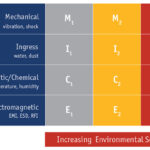
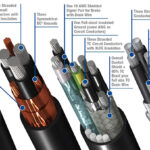
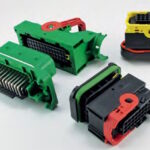
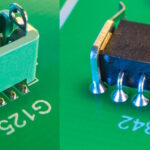
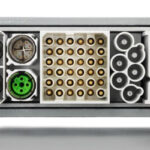
Leave a Reply
You must be logged in to post a comment.